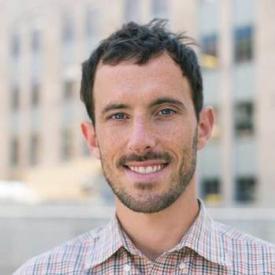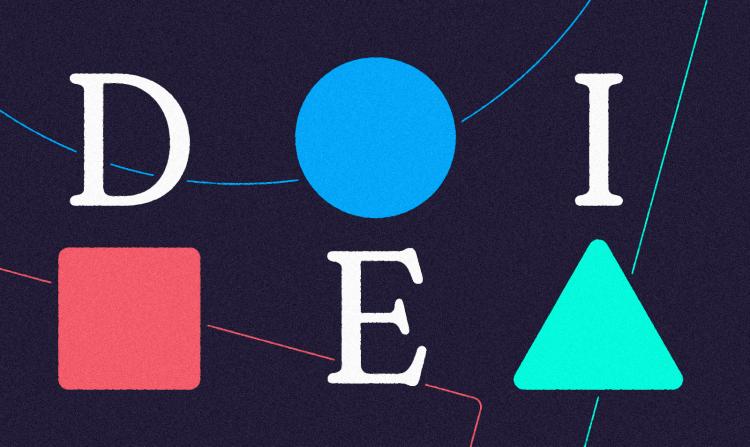We believe that DEI is good for our business, so it will always be a priority. The only actual cost to hiring and maintaining a diverse staff is putting in extra effort on the front end to find underrepresented candidates. A strength of mine is taking experiences from the past and applying lessons learned to make the future a better place. A weakness: celebrating successes, as those are always in the past. Staying true to form, here are some goals we’ve set to improve DEI further:
- Get better plugged into resources that are pipelines for non-traditional applicants. If you have any recommendations, please share them!
- Continue to eliminate bias further. LinkedIn has some tools we’re exploring to remove names and photos from profiles, which serves a similar purpose to the blind auditions the major U.S. symphonies incorporated to bridge the chasm of gender representation in the 70s. I learned of this through That’s What She Said, a book recommended by an applicant who, incidentally, went through a career transition from the restaurant industry and who discussed bias and imposter syndrome (experienced more by women, though we should be thoughtful about the language around it) with me during her interview. I enjoyed the book, and although we didn’t work together, we have kept in touch years later, and she has referred other applicants to Savas. Sidenote: where blind auditions were effective to address the gender gap, others advocate that this “person blindness” may be counterproductive to racial equality in hiring for symphonies.
- Establish how we can report on DEI to hold ourselves accountable with our new HR manager.
Genuine Challenges of a Diverse Workforce — What Diversity Really Means
Setting aside one of our historical low points, the Civil War, we live in one of the most highly polarized times in U.S. history. We’re still not far removed from a highly contentious presidential campaign, and the pandemic has served to further divide us with things like mask-wearing and vaccination often used as political tools. Although sensationalized and divisive content driving profitability is associated with a more recent evolution in traditional and social media, where we are today, at least on a political spectrum, has steadily become more divided for the last 50 years. The reality is Americans have strong, often opposing beliefs about many things, and I think it’s a good exercise for us to ask ourselves if we can productively work with and respect those who hold those opposing views.
At our office, there was a lot of discussion about the now-infamous Basecamp meltdown — which got a lot of attention within the tech community from such a small company; it clearly resonated with many. The scope of the issues and outcomes are too broad to unpack, but one of the themes I took away was the grey boundaries around creating or permitting space to discuss societal issues within the workplace. My view of the crux of the schism that resulted in ⅓ of the company resigning was that employees broadly thought leadership didn’t share perspective on some issues around race. At a tense all-hands-on meeting that predated the resignations by mere hours, Ryan Singer, one of the original four employees, a company leader, expressed he disagreed with characterizations of white supremacy and racism in their workplace and societally, which seemed to be a minority view. Although he appeared to speak respectfully according to this account, his viewpoints were very triggering for what I assume was a majority of the other employees. The co-founders didn’t disavow his perspective on the spot but instead thanked him for sharing. That seemed to be the straw that broke the camel's back for the ⅓ of the company that would leave within days.
I admit, as a leader, these are not easy situations to navigate. I chose not to weigh in (and wasn’t asked) on the discussions my team was having over Slack as things were unfolding for Basecamp. The truth is you can’t suppress people’s opinions from cropping up in a highly collaborative work environment like ours, even if you wanted to. Moreover, you’re dealing with humans. To borrow a couple of quotes from one of my favorite modern philosophers Alain de Botton that speaks to our diversity and generally the challenge of having healthy, reciprocal relationships:
- “We tend to believe that true love means accepting the whole of us. It doesn’t. No one should accept the whole of us; we’re appalling! … You really want the whole of you accepted? No, that’s not love. The full articulation of who we are is not something we should do in front of anyone we care about.”
- "You’re not easy to live with, and the reason is, you are a homo sapien, and therefore you’re not easy to live with; no one is."
These quotations are from a talk he gave at Google referencing an article he wrote in the New York Times titled “Why You’ll Marry The Wrong Person.” The lecture deals with romantic relationships, though much of the sentiment of how complex, weird, broken, and hard to live with we all are translates well to the workplace. As Allain presents, it’s hard for two people who proactively choose each other (in most modern circumstances) to share perspectives and respect their differences. It’s harder in a work setting with more varied views with people who don’t choose each other. We’re all strange and have lots of conflicting ideas. Things like religion and political affiliation, I’m comfortable saying there should not be internal debate about their merits and shortcomings. Still, there’s plenty of tangential territory where it’s not as clear whether it’s appropriate or not. It’s murky.
So crafting safe spaces within the workplace to discuss hot-button social issues is highly likely to induce some disagreement and should be done carefully. We are far from experts on this and would love any guidance from those who have implemented good policies. Ultimately, being inclusive is to be able to listen to and respect those with which you disagree. That’s very hard for us to do on issues we feel strongly about, but it is the authentic articulation of diversity and inclusion.
We have leaned on our values to frame conversations on several occasions over the past year, as the team has grown and the viewpoints have diversified. This is good; this is how it should be. People are comfortable enough to express how they feel about a broad array of topics, and when that steps out of line with the company values into territory that’s not inclusive or respectful, we address it. We take our values seriously, and living into them is recognizing that we’re all human. I know I don’t always take care with every line of communication to be respectful, empathetic in the way the best version of me would. Yet, I strive to create a space where any team member would feel comfortable holding me to the same standard I have for them.







